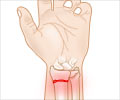A new study shows that more than thirty percent of college athletes assessed for breathing problems were victims of exercise-induced asthma.
A new study shows that more than thirty percent of college athletes assessed for breathing problems were victims of exercise-induced asthma. This was present even in those athletes who had no previous history of asthma.
The findings paralleled earlier findings of a high prevalence of exercise-induced asthma among Olympic athletes. The work also underscores the need to develop more routine diagnosis and management tools in athletes to detect the potentially serious condition among athletes.Researchers at Ohio State University Medical Center screened 107 Ohio State varsity athletes for exercise-induced asthma. Forty-two (39 percent) of the athletes tested positive, and 36 of those 42 athletes had no prior history of asthma.
The results suggest there are a significant number of athletes with unrecognized exercise-induced asthma. There were also many presentations of exercise-induced asthma, many of which were not classic cases, making diagnosis challenging.
Exercise-induced asthma occurs when airflow to the lungs is reduced due to narrowing and closing of the airways in association with exercise. This airway obstruction usually occurs just after exercise.
“We targeted varsity athletes in this study because many of the reported severe episodes of asthma provoked by exercise have occurred among competitive athletes under the age of 21,” said Jonathan Parsons, a pulmonologist and associate director of the Medical Center's Asthma Center and lead author of the study. “Now that we've demonstrated how common this problem can be, more research is needed to determine the best way to monitor and manage athletes at the highest risk of developing symptoms while participating in their sports.”
To stress the lungs, the researchers used eucapnic voluntary hyperpnea testing, a technique which has proved to be a sensitive test for diagnosing exercise-induced asthma. The test involves challenging or stressing the lungs by making the person hyperventilate, then measuring their lung function to determine if it decreases from the stress, mimicking the expected changes in exercise-induced asthma.
Advertisement
“One important finding of this study is that a history of symptoms with exercise is not enough to make a correct diagnosis,” said Parsons. “Diagnosis and treatment of exercise-induced asthma based solely upon subjective symptoms could increase the number of inaccurate diagnoses and expose people to unnecessary medications.”
Advertisement
Exercise is one of the most common triggers of bronchospasm in patients with chronic asthma, with exercise-induced asthma occurring in approximately 80 percent to 90 percent of individuals with known asthma. In addition, one out of every 10 people has no classic features of chronic asthma, yet still experience symptoms of asthma during exercise.
The dangers of exercise-induced asthma can vary from a mild impairment of performance to serious respiratory problems. Along with Parsons, other Ohio State researchers involved in the study were John Mastronarde, Christopher Kaeding, Gary Phillips, David Jarjoura and Gail Wadley.
Funding from The Chest Foundation, which is a part of the American College of Chest Physicians, and a grant from the National Institutes of Health, supported this research.
Source-Eurekalert
LIN /J








